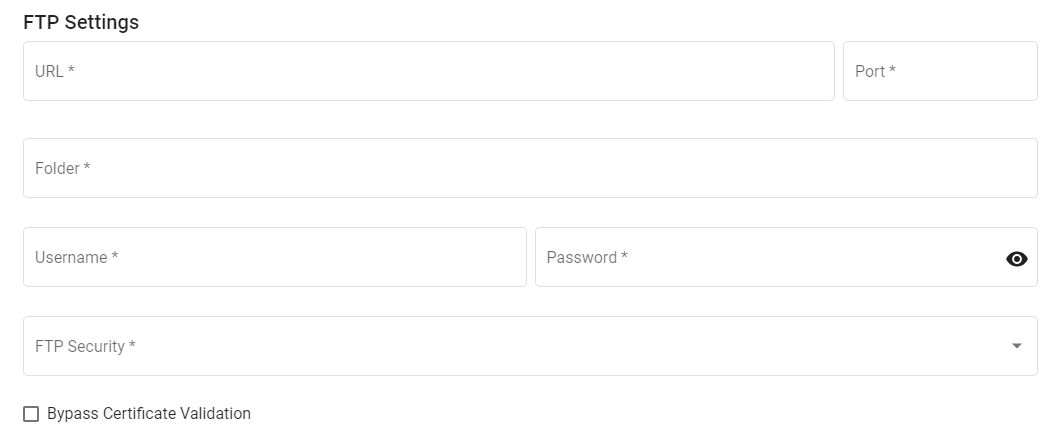# The FTP Setup Process
FTP (File Transfer Protocol) is also a method of transferring files between two remote systems. To address the lack of security for FTP, Connectors use an extension of FTP called FTPS (FTP Secure). FTPS utilises either TLS (Transport Layer Security) or SSL (Secure Sockets Layer) for encrypting communications between you and your FTP Server. Within the Connector Configuration form, the following fields must be filled to setup a connection to the Trading Partner's EDL Gateway.

# URL
The URL refers to the location of the SFTP Server. This could be a domain URL or an IPv4 IP address.
# Port
The default port number that FTPS utilises depends on the FTP Security. For Impicit Security, it is Port 990 and for Explicit Security, it is Port 21. Otherwise, any port number can be configured by your FTPS server.
WARNING
Make sure not to use an IP Port Number that is currently in use by another IP protocol.
# Folder
The Folder field refers to the folder on the host server to poll for incoming changes.
# Authentication Method
Unlike SFTP, FTPS has only one method of authentication. This is the combination of a Username, Password and a FTP Security type. There is also an option to bypass Certificate Validation
# Username and Password
Enter the Username and Password of your FTPS server.
# FTP Security
DX2 gives you the option to utilise security methods provided by FTPS. There are three security methods: None, Implicit, and Explicit
# None
This option utilises no security method. However, this means that connections between you and your FTP server will be unencrypted.
WARNING
Using no FTP Security may introduce security risks. It is strongly recommended that you use an FTP Security option.
# Implicit
Implicit security automatically establishes a TLS/SSL connection as soon as you connect to the FTP server. If the SSL connection fails, then no further communication is allowed.
TIP
For Implicit security, the default port that the client connects to is (990)
# Explicit
Explicit security does not automatically establish a TLS/SSL when you connect to the FTP server. Instead, it requires the client to issue a specific command to turn on the TLS/SSL connection between the client and server.
TIP
For Explicit security, the default port that the client connects to is (21)
# Bypass Certificate Validation
Certificate Validation is the process of validating that you or the host server has not been compromised by comparing certificates with a trusted third party. It is a way of preventing Man-in-the-middle attacks.
WARNING
Bypassing Certificate Validation may introduce security risks. It is strongly recommended that you do not bypass Certificate Validation.